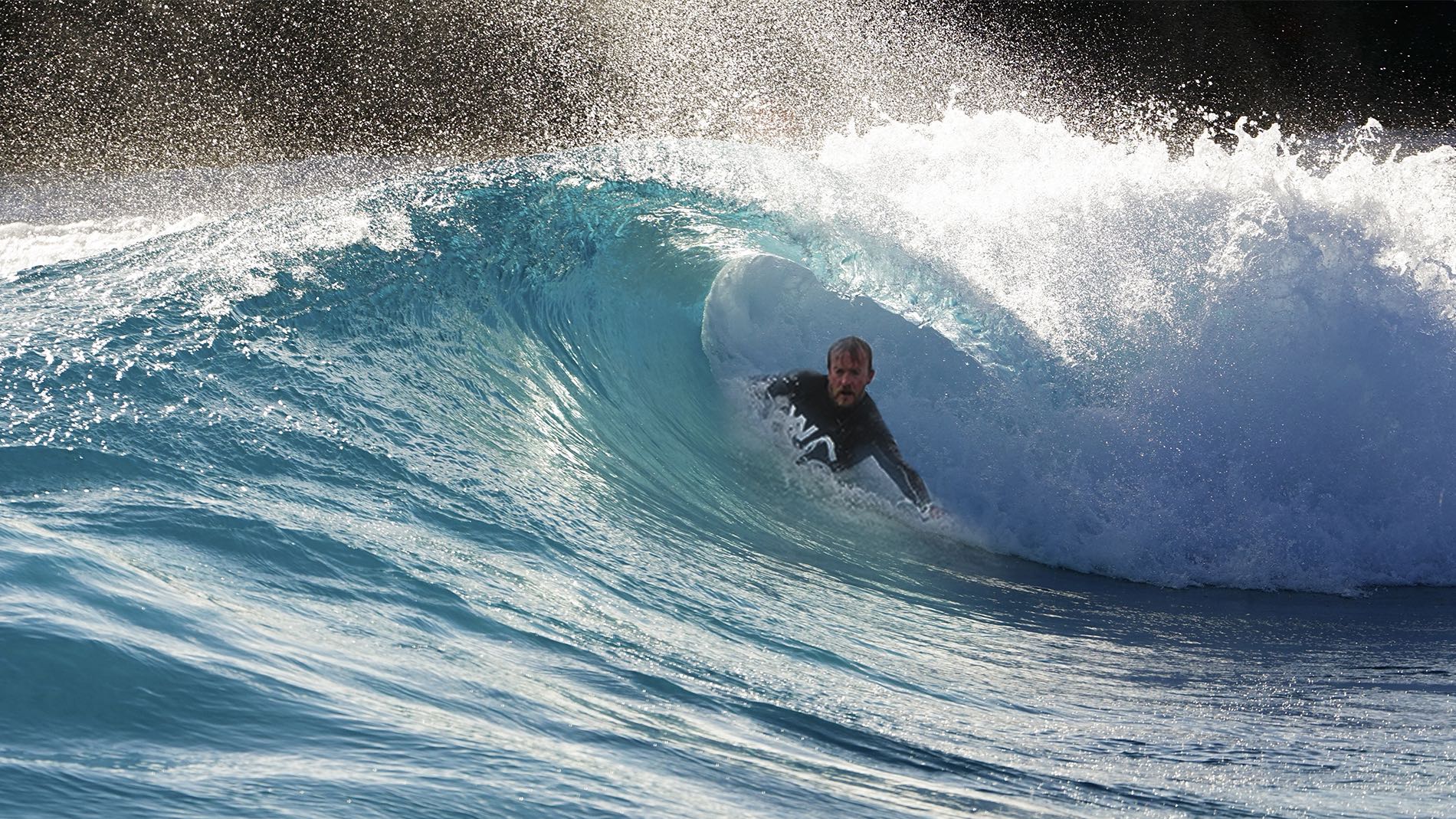Can you bodysurf during regular hours at the world’s surf pools?

To slide along a wave, with nothing bar a pair of fins, a bit of clothing, and possibly a handplane, is surfing at its simplest. Or to put it another way, bodysurfing is the oldest and often most overlooked form of wave riding.
Mike Stewart, legendary bodyboarder, 16-time Pipeline bodysurf champion, and one of the greatest watermen of all time believes that bodysurfing is “the best interaction between man and nature that exists”.
Now sure, the nature part doesn’t apply as aptly when talking about wave pools. But the thrill of being pushed along by liquid energy is still there. And while the numbers of bodysurfers are far outweighed by their standup brethren, bodysurfers are generally a core crew, and just as passionate about riding waves as any other surfer.
But are wave pools as welcoming to bodysurfers as board riders? Says Nick Hounsfield, CEO of Bristol’s, The Wave, “We have a few bodysurfers who come on a fairly regular basis and we have not had any issues at all.” Though just as with any surf session, Nick stresses that people need to check out the different types of waves available, to ensure they’re selecting the right level for their ability.
Melbourne’s Urbnsurf welcomes bodysurfers, with a caveat. “In terms of bodysurfers, we only allow people in the main wave (Point) with the minimum of a handplane. It works pretty well and we haven’t had any issues,” reckons CEO Damon Tudor. “We also have Swim in the Bays sessions in Summer on occasion, imagine playing between the flags at the beach, same sort of thing,” he says.
Switzerland’s Alaia Bay, The Kelly Slater Wave Co. pool in Lemoore, CA, Surf Stadium in Japan, and Waco Surf in Texas all give bodysurfing the thumbs up, or possibly, hi-five-ing hand planes.
Though what’s it like bodysurfing a man-made wave? I spoke with Jason Hackforth who’s slid a couple, owns a hand plane business and is based in the cold waters of Santa Cruz.
“Yep, I’ve bodysurfed Waco Surf and the Kelly Slater Wave Co. (KSWC) pool. Both are very different experiences from the ocean, and each other.” Jason says. He mentions that besides both being fresh water instead of saltwater, both were completely different experiences, with the KSWC pool probably being the closest to an ocean experience.
“Slater’s wave comes at you like a long period point break swell,” reckons Jason, “you’ve got lots of time to get in position and minimal swimming needed to catch it. You can even stand in some places, and it’s a very smooth ride too. It’s way faster than Waco though, so I was getting much shorter rides.”
And of Waco? “Waco’s a weird little wave, it kind of pops up out of nowhere, and for a bodysurfer, it requires a lot of swimming to get into. I also found it to be a bumpy ride, I think the concrete wall next to you creates some little side ripples that add texture to the wave face. I was getting very long rides there though, in some cases 6 to 8 seconds.”
Jason rates the predictability and perfection of the waves at KSWC’s, but mentions the cost as a major drawback. “I thought it was totally worth it, though my wife thinks I’m insane,” laughs Jason.
As for any safety issues? “The only thing is the fact that the bottom of both is concrete,” says Jason, “I only grazed the bottom a couple of times at Waco and lost a little skin on my knee and ankle, never had that problem in Lemoore. But that’s probably because I was wearing a full suit there, I went in December and the water was 48°F (or around 9°C). I’ve heard stories of people slamming into the bottom in Lemoore and breaking bones, but I think it’s very rare.”
And what about wave settings? Are there any better suited to bodysurfing? Reckons Jason, “Waco only runs one setting for public sessions, they’ve got an air section and slab tube settings, but you have to book a private all-day session for those. I was in public sessions.”
And for KSWC? “Lemoore is completely private, and my understanding is that it has several settings. For beginners, they can run what they were calling the Waikiki setting, which is slow and crumbly. When I was there they were running what they called CT1 and CT2. If I remember correctly CT1 is kind of a straight-down-the-line full-speed tube, and CT2 has slower bits where you can do turns if you’re surfing. As a bodysurfer, I didn’t really notice the difference.”
Jason notes that for bodysurfing the only makable part is the end section of the wave, for both settings.
I asked Jason if he’d bodysurf these pools again? “Absolutely!”, he replied in an instant, “Waco involves air travel for me and renting a car, but it was a lot of fun and I’d definitely do it again. I can drive to Lemoore in a couple of hours, but it’s basically impossible to get in unless you spend a lot of money.”
And what about other pools? “I’d love to hit other ones, there are a couple in Australia that I’m jonesing to try, though I don’t see that happening soon. But the one in like New Jersey, that might be more feasible,” grins Jason.
So jump on in. Swim, slide, and smile. It’s a simple recipe for aquatic fun.
Related Coverage
